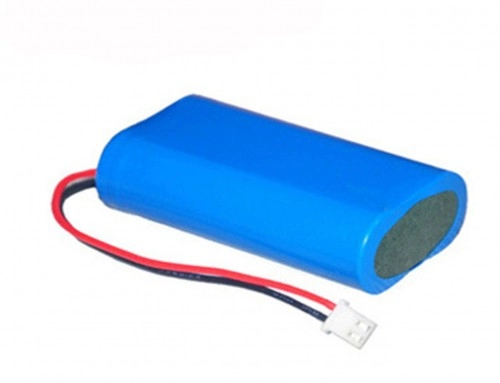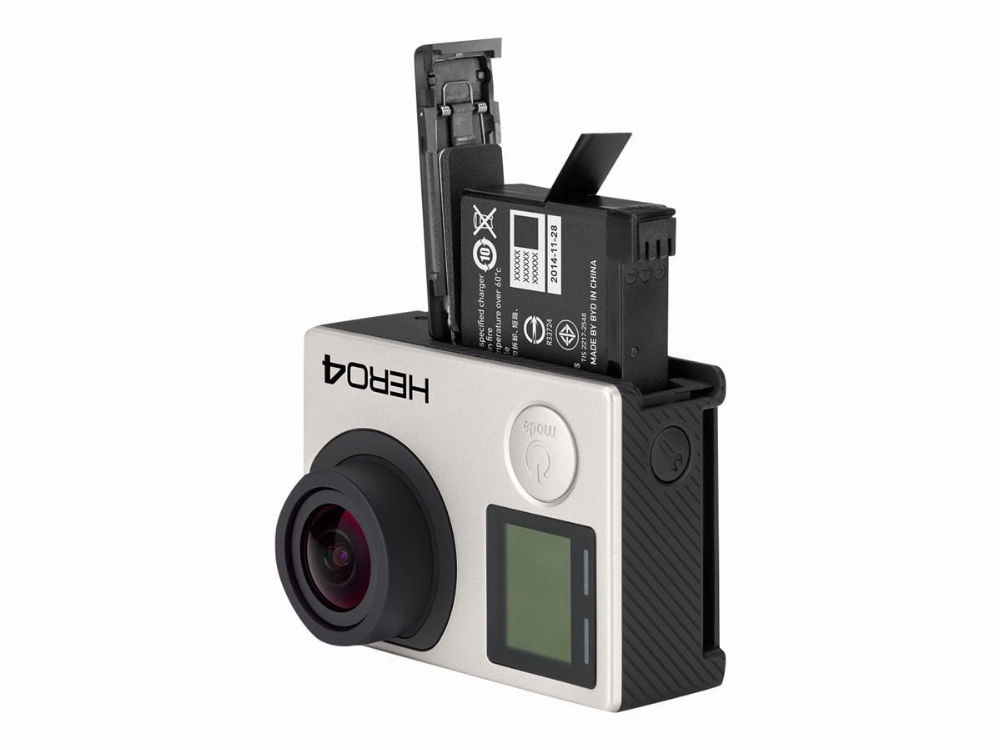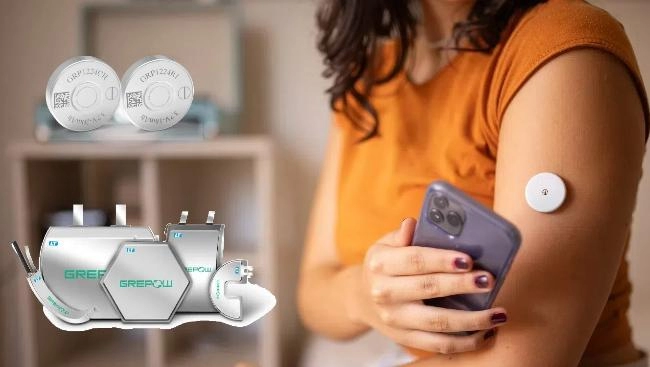3.7V Rechargeable Batteries: An Explanation and Applications
In an era where portable electronic devices have become an indispensable part of our daily lives, 3.7V rechargeable batteries are of utmost importance. From smartphones to drones, these batteries power a wide array of devices, making them a vital component in modern technology. This article explores the various types, sizes, uses, and essential tips for selecting and maintaining 3.7V rechargeable batteries.
Part 1. What is a 3.7V Rechargeable Battery?
A 3.7V rechargeable battery is a lithium-based power source with a nominal voltage of 3.7 volts. These batteries typically use lithium-ion (Li-ion) or lithium polymer (LiPo) chemistries. Known for their high energy density, these batteries are designed to be charged and discharged multiple times. They are preferred in today’s electronics due to their efficiency, longevity, and lightweight nature.
Basic Structure and Components:
- Anode (Negative Electrode): Typically made of graphite.
- Cathode (Positive Electrode): Usually composed of lithium metal oxides, such as lithium cobalt oxide (LiCoO₂).
- Electrolyte: A lithium salt dissolved in an organic solvent, which facilitates the movement of ions between the electrodes.
- Separator: A permeable membrane that prevents physical contact between the anode and cathode while allowing ion flow.
Chemical Properties and Characteristics:
These batteries function by the movement of lithium ions between the anode and cathode during charging and discharging.
Key characteristics include:
- High energy density
- Lightweight design
- Nominal voltage of 3.7V
- Minimal memory effect
- They offer an Extended cycle life with proper maintenance
Part 2. Types of 3.7V Rechargeable Batteries
There are several different types of 3.7V rechargeable batteries, each designed for specific applications:
- 3.7V Lithium-Ion (Li-ion) Batteries: These are the most common type, known for their high energy density and lightweight design. Li-ion batteries power numerous consumer electronics, including smartphones, laptops, and cameras.
- 3.7V Lithium Polymer (Li-Po) Batteries: Li-Po batteries are known for their flexible and compact form factor, and are often used in applications where weight is a critical factor, such as drones, remote-controlled vehicles, and other specialized devices.
Part 3. Sizes of 3.7V Rechargeable Batteries
3.7V rechargeable batteries come in various sizes to meet the needs of different devices. It’s important to note that cylindrical cells often follow standardized sizes. In contrast, however, LiPo batteries can vary in size based on factors like capacity and manufacturing processes. Here are some common sizes:
1. Lithium Polymer (LiPo) Batteries:
LiPo batteries are known for their compact, high-density, and flexible form. Since they don’t have standard sizes, they can be customized to fit specific applications. Common sizes for LiPo batteries include:
- 500mAh: Dimensions: Approximately 30mm x 20mm x 5mm
- 1000mAh: Dimensions: Approximately 35mm x 25mm x 10mm
- 2200mAh: Dimensions: Approximately 60mm x 34mm x 10mm
2. Cylindrical Lithium-Ion (Li-ion) Batteries:
Cylindrical Li-ion batteries come in several sizes, with the most popular being 18650, 26650, and 14500. Their sizes are more standardized, making them widely used in various devices.
- 18650 Battery: They are 18mm in diameter and 65mm in length. These batteries are commonly used in laptops, flashlights, and electric vehicles due to their balanced size and capacity.
- 26650 Battery: Larger, they are 26mm in diameter and 65mm in length. These batteries are well-suited for high-drain applications like power tools and high-performance flashlights.
- 14500 Battery: They are 14mm in diameter and 50mm in length, these batteries are similar to AA batteries and are used in smaller electronics such as flashlights and other portable devices.
These different sizes of 3.7V rechargeable batteries are designed to meet the needs of various devices. They offer flexible power solutions for a wide range of electronic devices in today’s technology-driven world. For more information on RV battery sizing, check out our detailed guide.
3.7-Volt Batteries and Their Applications
Part 4: Common Uses for 3.7-Volt Batteries
3.7-volt batteries are widely used in a variety of applications due to their versatility:
- Consumer Electronics: These batteries are commonly found in devices such as smartphones, tablets, laptops, and cameras.
- Portable Devices: They provide the necessary power for devices like flashlights, e-cigarettes, and portable gaming consoles.
- Toys and Hobbies: 3.7V batteries are also utilized in toys, drones, remote-control cars, and other remote-controlled devices.
- Power Tools: Many cordless power tools, such as drills and saws, rely on 3.7V batteries.
- Medical Equipment: These batteries are frequently found in portable medical devices, providing reliable power in critical situations.
Part 5: Are All 3.7-Volt Batteries Rechargeable?
Not all 3.7-volt batteries are designed to be rechargeable. Some are disposable.
Part 6: The Charging Process of a 3.7-Volt Battery
When charging a 3.7V rechargeable battery, the voltage fluctuates throughout the charging process. The standard procedure involves two stages:
Constant Current (CC) Phase:
During this phase, the charger provides a steady current to the battery. The voltage gradually increases from the battery’s discharged state (around 3.0V) to approximately 4.2V.
Constant Voltage (CV) Phase:
Once the battery reaches 4.2V, the charger switches to constant voltage mode while reducing the current. Charging continues until the current drops to a very low level, indicating that the battery is fully charged.
It is crucial never to exceed the 4.2V limit to prevent overcharging, which can damage the battery or pose a safety risk.
Part 7: When is a 3.7-Volt Battery Considered Depleted?
A 3.7-volt battery is considered depleted when its voltage drops to around 3.0 volts. At this point, the battery can no longer effectively hold a charge and should be replaced promptly to avoid damaging the device it powers.
Part 8: Battery Lifespan
The lifespan of a 3.7-volt rechargeable battery varies depending on its type:
- Lithium-ion Batteries: These batteries typically last for 300 to 500 charge cycles.
- Lithium Polymer Batteries: These batteries generally last for 200 to 300 charge cycles.
Part 9: Charger Types for 3.7V Batteries
There are several types of chargers available for 3.7V rechargeable batteries:
- Universal Chargers: These chargers can handle various battery sizes and types, making them convenient for users with different batteries.
- USB Chargers: Compact and portable, these chargers are ideal for small devices and can be powered via USB ports.
- Dedicated Chargers: These chargers are specifically designed for certain battery types, ensuring optimal charging conditions and safety.
Part 10: How to Charge a 3.7-Volt Battery
To safely and effectively charge a 3.7-volt rechargeable battery, follow these steps:
- Select the Right Charger: Ensure that the charger is compatible with the battery’s type and size. Avoid using incompatible generic chargers.
- Inspect the Battery’s Condition: Before charging, inspect the battery for any signs of damage, such as swelling, leaks, or corrosion. Never charge a damaged battery.
- Connect the Battery: Insert the battery into the charger, ensuring that the positive and negative terminals are correctly aligned. Some chargers have indicator lights to show correct battery polarity.
- Monitor the Charging Process: Keep a close eye on the charging process. Some chargers have automatic shut-off features when the battery is fully charged, while others may require manual monitoring.
- Avoid Overcharging: Overcharging can shorten the battery’s lifespan and increase the risk of overheating or fire. Remove the battery promptly after it is fully charged.
- Store Properly: If you’re not using the battery immediately, store it in a cool, dry place away from direct sunlight and extreme temperatures.
Part 11: The Effect of Temperature on 3.7V Batteries
Temperature plays a significant role in the performance and lifespan of 3.7V rechargeable batteries:
- High Temperatures: Prolonged exposure to high temperatures can lead to chemical degradation, reduced battery capacity, and even safety issues like thermal runaway (a dangerous overheating condition).
Part 12: Selecting the Right 3.7V Rechargeable Battery
To ensure your 3.7V rechargeable battery provides optimal performance and a longer lifespan, follow these maintenance tips:
- Regular Use: Batteries perform best when used frequently. If you have multiple spare batteries, rotate their use to maintain healthy charge-discharge cycles.
- Avoid Deep Discharges: Do not allow the battery to completely discharge. Charging the battery when it has 20-30% capacity remaining can extend its lifespan.
- Proper Storage: When not in use for extended periods, store the battery with around 50% charge to prevent capacity degradation over time.
- Temperature Control: Avoid exposing the battery to extreme temperatures. High and low temperatures can shorten battery life and reduce efficiency.
- Clean Contacts: Regularly clean the battery contacts with a dry cloth to maintain a good connection and ensure efficient charging.
Part 13: Storage
Proper storage is crucial for extending the life of your 3.7V rechargeable battery:
- Charge Level: Store batteries with a charge level of around 40-60% to reduce stress on the cells.
- Environment: Store them in a cool, dry place away from direct sunlight and moisture.
- Temperature Range: The ideal storage temperature is between -20°C and 25°C.
- Avoid Prolonged Discharge: Periodically check stored batteries and charge them as needed to avoid deep discharge, which can damage battery capacity.
Part 14: Recycling
Recycling 3.7V rechargeable batteries is essential for environmental sustainability:
- Environmental Impact: Improper disposal can release harmful chemicals into the environment.
- Recycling Programs: Many manufacturers and local waste management agencies offer battery recycling programs.
- Disposal Guidelines:
- Never throw batteries in regular trash bins.
- Tape the positive and negative terminals of the battery to prevent short circuits.
- Dispose of them at designated recycling bins or drop-off centers.
Recycling helps conserve valuable materials like lithium, cobalt, and nickel while reducing waste.
Related Tags:
- KHZH
- Electronic Engineering Copywriter
More Articles:
- Battery Leakage Wire Safety Cleaning Guide: Detailed Steps: This guide covers the risks, safety tips, and proper methods for cleaning battery acid leaks.
- Portable Charger vs. Power Bank: A Complete Analysis of the Differences: A portable battery charger is a charging device, while a power bank stores energy and can charge devices without an external power source.
- The Ultimate Guide to Using a Lithium Battery Jump Starter: This guide is essential for automotive emergencies, covering its use, safety, and maintenance, emphasizing why it is a wise investment.
What is a Portable Battery Charger?
A portable battery charger is a device designed to keep your devices powered while on the go. This guide explains its definition, components, and how it works to provide a concise and easy-to-understand overview. Knowing this can help you better choose and use a portable charger.
Choosing the Right Portable Battery Charger: Capacity, Performance & More
Choosing the right portable battery charger is crucial for reliable performance. This guide highlights essential elements such as capacity, safety features, and key features to help you make the best decision. For information on different types of lithium batteries, see 12V battery types and their suitability to help you make an informed decision.








